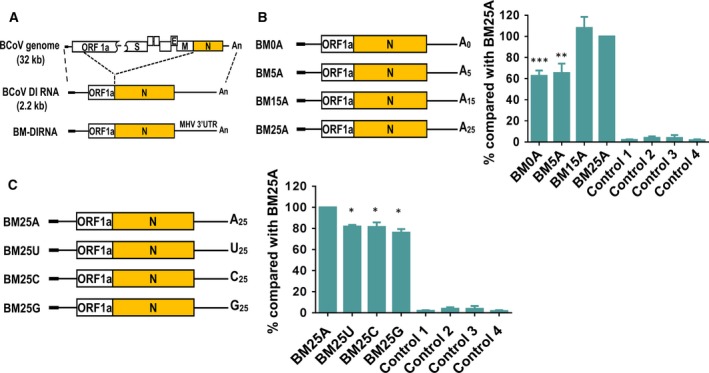Figure 1.

Effect of the length and sequence of the poly(A) tail on (−)‐strand RNA synthesis. (A) Schematic diagram depicting the structure of the BCoV genome, BCoV DI RNA and BM‐DI RNA, which is derived from BCoV DI RNA but carrying the MHV 3′ UTR. BCoV DI RNA contains only 288 nt of ORF1a gene. (B) Left panel: BM‐DI RNA constructs engineered to contain poly(A) tails of various lengths. Right panel: relative efficiency of (−)‐strand RNA synthesis from BM‐DI RNA constructs (left panel), as measured by RT‐qPCR. (C) Left panel: BM‐DI RNA constructs engineered to replace the 25‐nt poly(A) tail with a 25‐nt poly(U), poly(C) or poly(G) tail. Right panel: relative efficiency of (−)‐strand RNA synthesis from BM‐DI RNA constructs (left panel), as measured by RT‐qPCR. Controls in (B) and (C): Control 1 – total cellular RNA from mock‐infected cells. Control 2 – total cellular RNA from BCoV‐infected cells. Control 3 – total cellular RNA from BM25A‐transfected mock‐infected cells. Control 4 – a mixture of BCoV‐infected cellular RNA extracted at 8 hpt and 200 ng of BM25A transcript. The values in the right panel of (B) and (C) represent the mean ± SD of three individual experiments. The statistical significance was evaluated using a t‐test versus BM25A: *P < 0.05, **P < 0.01, ***P < 0.001.
